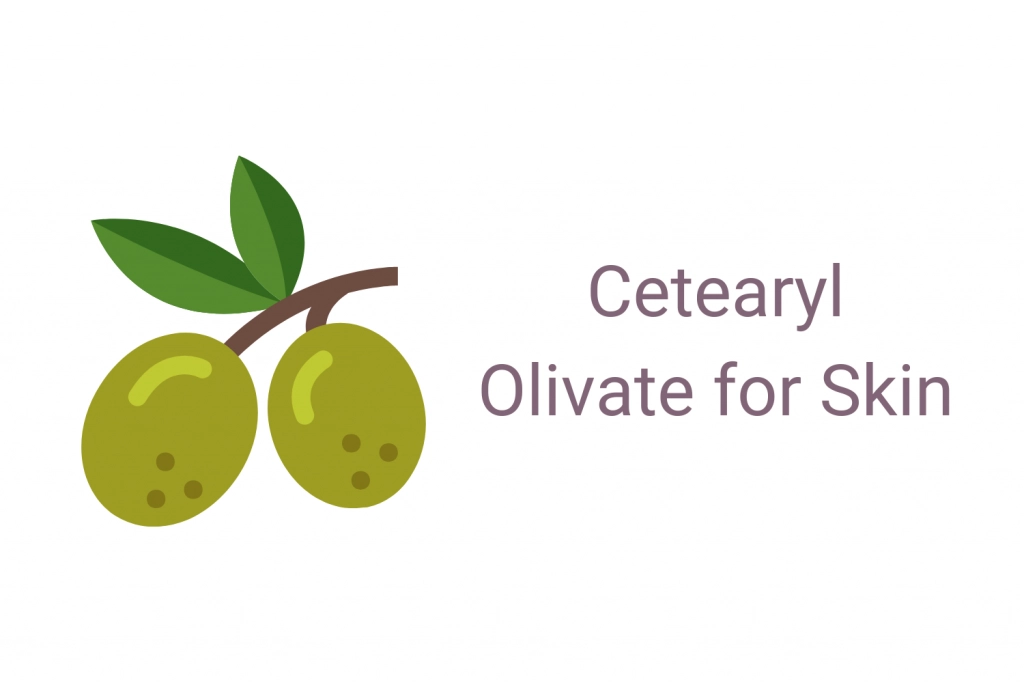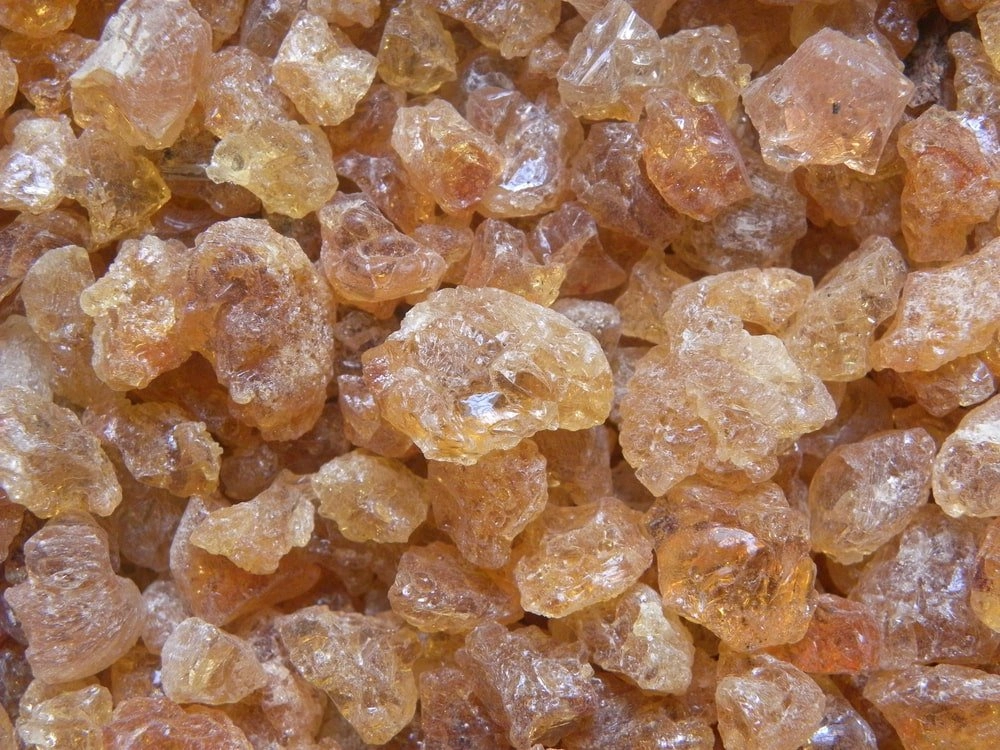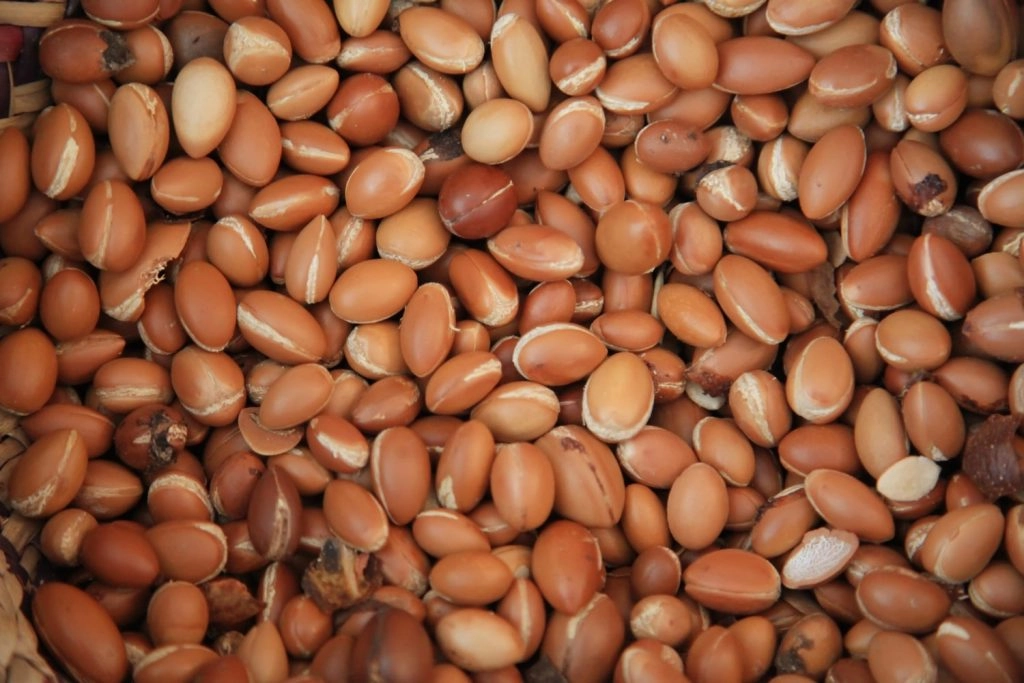By reading the name Cetearyl olivate you likely guessed that it’s derived from olive oil. But this skincare ingredient is a little different than the olive you mix with balsamic and dip bread in. The synthetic process creates a PEG-free, hypoallergenic emulsifier that has moisturizing benefits to the skin. Sounds fancy right?
This post may contain affiliate links. Read the full disclosure here
Keep reading to learn more about how Cetearyl olivate is used in skincare and whether it’s good or bad for your skin.
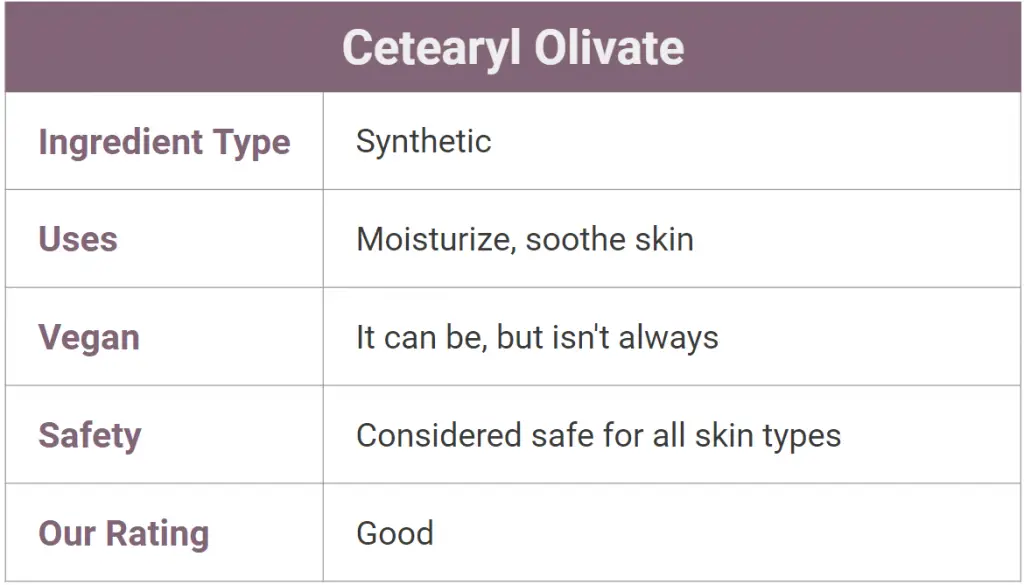
What Is Cetearyl Olivate?
Cetearyl olivate is an oily, waxy ester made from Cetearyl alcohol (a type of fatty alcohol) and fatty acids derived from olive oil. Primarily, it’s used as an emulsifier – it can help bring together oils and water-based ingredients. This can help various ingredients mix better and also increase the shelf-life of the product. You may notice separation when using skincare products; emulsifiers can help prevent this from happening.
It has a very thick and luxurious texture, which makes it highly desirable for skincare products. It feels nice. Products created with Cetearyl olivate spread easily across the skin, and do not leave behind a “soapy” or “filmy” texture. It biomimics the skin in many ways and absorbs well. Cetearyl olivate is a type of emulsifying wax. Alternatives to Cetearyl olivate as an e-wax are Polawax, BTMS-50 , and Emulsifying Wax NF. Beeswax is another alternative when opting to make a product without an emulsifying wax.
Cetearyl olivate is often paired with sorbitan olivate in skincare formulations also referred to as olivem 1000. Sorbitan olivate is also a skin friendly ingredient that is derived from olive oil and esterified with sorbitol (a sugar alcohol).
What Are The Uses & Benefits of Cetearyl Olivate In Skincare?
Not sure why Cetearyl olivate would be used in skincare? In addition to the emulsifying and texture enhancing benefits above, this ingredient also provides direct benefits to the skin. It’s a win-win!
- Moisturizes the skin – It can penetrate deep into the skin, providing hydration and nourishment. Rejuvenate your skin, leaving a fresh, dewy complexion. It can also improve the overall texture and firmness of the skin.
- Helps soothe and relax skin – It helps soothe irritated skin while moisturizing and strengthening it, and delivering the oils and hydration that your skin needs to feel soft, and relieve itchiness and redness.
- Repairs outer barriers of skin – It has liquid crystal structures that are similar to the lipid structures of the stratum corneum, the outermost layer of the epidermis. This can help repair and regenerate damaged skin.
One study also found cetearyl olivate can help improve the effectiveness of sunscreen products. This ingredient also helped improve the application of a powdered sunscreen product.
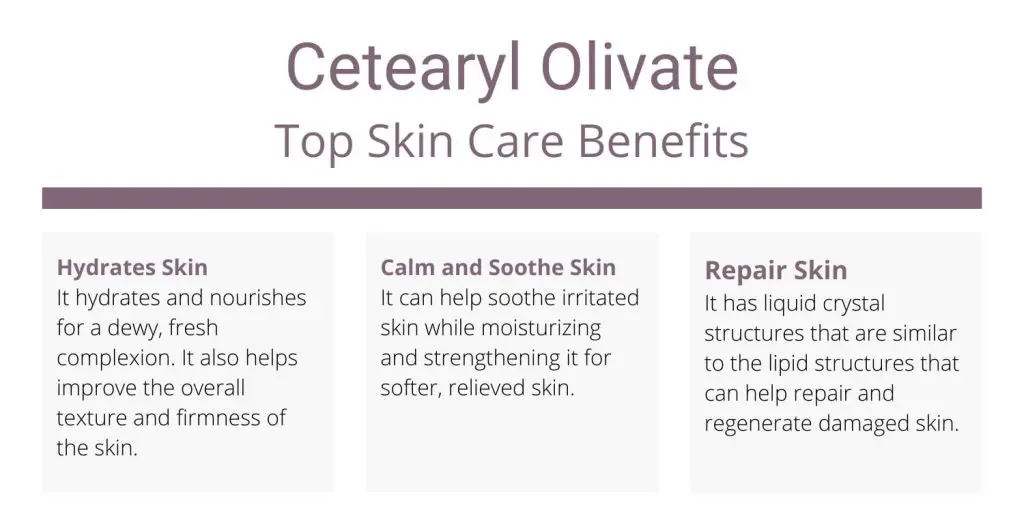
Is Cetearyl Olivate Vegan?
Cetearyl olivate is usually vegan – but it’s not always vegan. The oils used to create it are derived from the olive plant, but the Cetearyl alcohol used in the creation of Cetearyl olivate may be derived from animals, in some cases.
Generally, any product containing Cetearyl olivate that’s advertised as vegan will not contain any animal products – but if you find this ingredient in a product that is not marketed to vegans, it may have been made with animal byproducts.
When in doubt, we recommend contacting the manufacturer of a skincare product directly, and asking if they know whether or not their Cetearyl olivate contains any animal-derived Cetearyl alcohol.
Is Cetearyl Olivate Safe In Skincare?
Yes. Cetearyl olivate is known to be hypoallergenic, gentle, and safe even for sensitive skin. It’s considered safe for use in skincare products like lotions, creams, face masks, sunscreen, and more. It is also used in cosmetics and some hair care products.
The Cosmetic Ingredient Review Expert panel also considers cetearyl olivate safe for use in cosmetics.
This is the type of ingredient we love to see in skincare products. It can be sourced naturally and offers direct benefits to the skin AND it enhances product experience.
Another ingredient you may find interesting is Isoamyl Laurate. It’s a plant-derived alternative to silicone-based ingredients.
Will Cetearyl Olivate Clog Your Pores?
Cetearyl likely will not clog your pores but we can’t say for certain.
Olive Oil has a comedogenic rating of 2, which means there is a low chance of clogging pores. However, it is generally used as OLIVEM 1000 (Cetearyl Olivate + Sorbitan Olivate) which has a comedogenic rating of less than 1. That is considered to be non-comedogenic and won’t clog your pores.
Comedogenic ratings are based on a 0-5 scale that determines the probability of an ingredient to clog your pores. It’s not perfect but the scale provides a general idea of the risk for clogging pores. The higher the number, the more likely it is to clog pores.
Cetearyl Olivate vs. Sorbitan Olivate
Cetearyl olivate and sorbitan olivate are emulsifiers derived from Olive oil. They are PEG-free ingredients that help prevent skin moisture loss and help promote a healthy skin barrier. This ingredients are commonly used together, but how do they differ?
As noted above, Cetearyl olivate is made from Cetearyl alcohol and fatty acids from Olive oil. On the other hand Sorbitan olivate is made from sorbitol and the fatty acids of Olive oil. One is made with Cetearyl alcohol and the other is made with Sorbitan. They are both considered good ingredients with benefits for the skin and product formulation.
Related Moisturizing ingredients:

